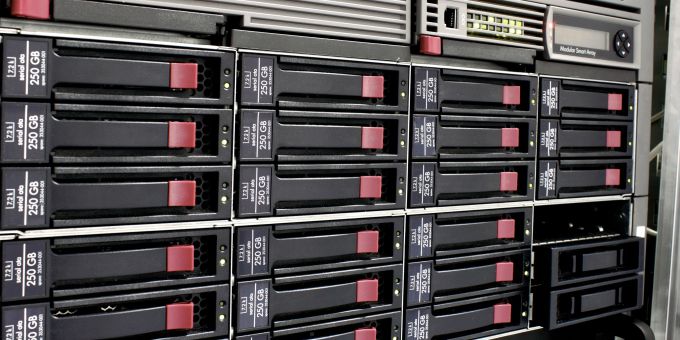An Example of How to Configure iSCSI StorageAn Example of How to Configure iSCSI Storage
A Windows Server 2012 failover cluster requires shared storage, which can be an iSCSI, Serially Attached SCSI, or Fibre Channel SAN. Here's an example of how to configure an iSCSI SAN.
February 22, 2013

A Windows Server 2012 failover cluster requires shared storage, which can be an iSCSI, Serially Attached SCSI, or Fibre Channel SAN. In my failover cluster, I configured an iSCSI SAN.
Main Article: Windows Server 2012: Building a Two-Node Failover Cluster
I started by creating three LUNs on the iSCSI SAN. I created one LUN for the cluster quorum and sized it at 520MB. I created another LUN for 10 virtual machines (VMs) and sized it at 375GB. I created the third LUN for a small test VM. I formatted all the LUNs using NTFS.
After creating the LUNs, I configured the iSCSI Initiator on both Server 2012 nodes. To add the iSCSI targets, I chose the iSCSI Initiator option on the Tools menu in Server Manager. On the Discovery tab, I clicked the Discover Portal button. This displayed the Discover Portal dialog box, where I entered the SAN's IP address (192.168.0.1) and iSCSI port (3260).
Next, I selected the Targets tab and clicked the Connect button. In the Connect To Target dialog box, I supplied the target name of the iSCSI SAN. I obtained this name from the SAN's properties. The name will vary depending on the SAN vendor, the domain name, and the names of the LUNs created. Besides supplying the target name, I selected the Add this connection to the list of Favorite Targets option.
After completing the iSCSI configuration, the iSCSI Initiator Targets tab was populated with the LUNs. To ensure that these LUNs would be automatically connected when Server 2012 starts, I made sure they were listed in the Favorite Targets tab, as shown in Figure A.

Figure A: Configuring the iSCSI Initiator
Finally, I assigned drive letters to the LUNs using the Microsoft Management Console (MMC) Disk Management snap-in. I choose Q for the quorum and W for the drive to be used for the VMs and Cluster Shared Volumes (CSVs). When assigning drive letters, you first need to make the assignments on one node. Then, you need to bring the disks offline and make identical assignments on the second node. You can see the completed disk assignments for one of the nodes in Figure B. When you create the cluster, the drives will be shown as available storage.

Figure B: Reviewing the Disk Assignments of a Node's iSCSI Drives
About the Author
You May Also Like






.jpg?width=700&auto=webp&quality=80&disable=upscale)
